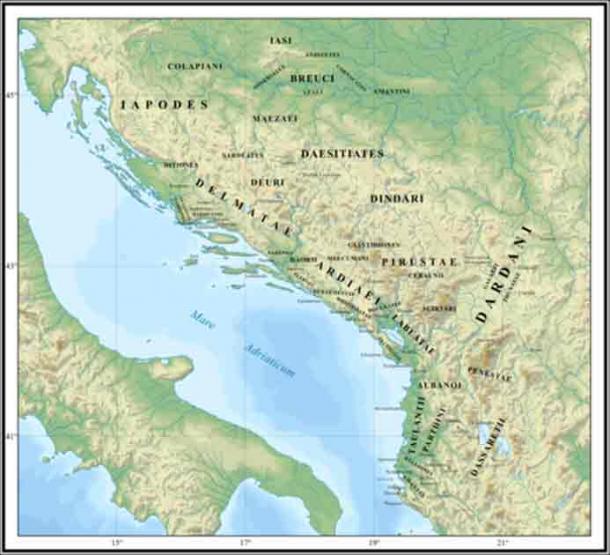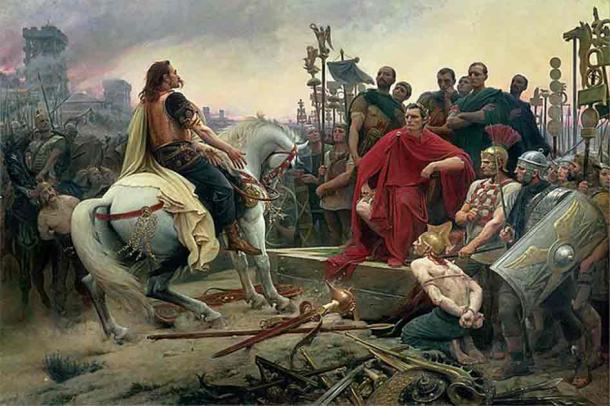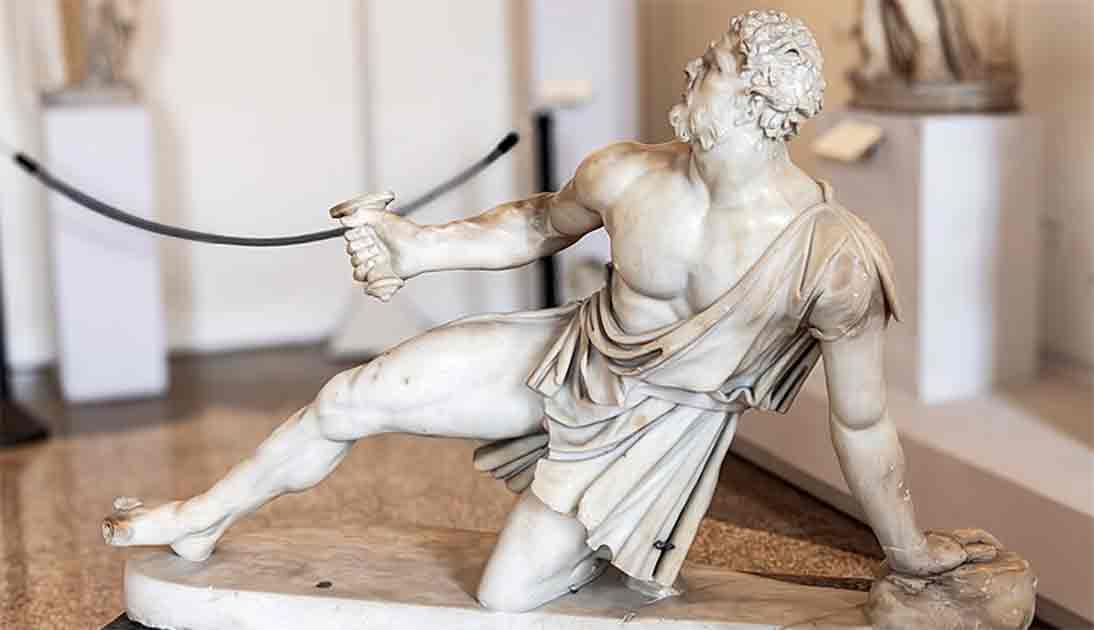Gallant Gauls: A Journey Through Ancient Europe
The story of the Gauls, ancient inhabitants of modern-day France, Belgium, Switzerland, and parts of Italy, offers a fascinating journey into a civilization often overshadowed by their Roman conquerors. Emerging as formidable adversaries to Rome, the Gauls, characterized by their distinct Celtic culture, left an undeniable mark on history. They’re mostly remembered as fierce warriors, but they were so much more. They had a complex societal structure, rich artistic traditions, advanced metallurgy, and an absolute ton of gold! While they were more advanced than history gives them credit for, they still fell to the might of Rome. Theirs is a tale of bravery, intrigue, and resilience but also a cautionary tale - a house divided cannot stand.
- Exploring the Little-Known History of Celtic Warriors in Egypt
- The Camillus Conundrum: Did Camillus Really Save Rome from the Gauls?
A Brief History of the Gauls
The Gauls, an ancient people whose ethnonym "Galli" originates from the Celtic root ‘gal’ - meaning 'power' or 'ability', have a rich and complex history. According to Caesar himself (a surprising fountain of knowledge when it comes to the Gauls), the Gauls referred to themselves as Celtae in their own language, while Romans used "Galli" as a synonym. Interestingly, the English term "Gaul" originates from Germanic “Walhaz,” derived from the Gallic ethnonym Volcae, which later encompassed Celtic and Romance speakers in medieval Germanic languages.
Gaulish culture evolved over the first millennium BC, witnessing significant cultural phases such as the Urnfield, Hallstatt, and La Tène cultures. Influences from Greek, Etruscan, and Roman civilizations began to shape Gaulish society, especially in the Mediterranean region.
- Exceptionally Preserved “Still Shining” Bronze Age Sword Unearthed In Bavaria
- The Forgotten Celtic History Of Ancient Poland

"Dying Gaul" in the museum on the Capitol, Rome, Italy. (Valery Rokhin/Adobe Stock)
The Gauls began to leave a mark on history through their migration from Central France to the Mediterranean coast by the 5th century BC. Gallic settlers occupied the Po Valley in the 4th century BC, clashing with Roman forces and even raiding as far south as Sicily. After this they set their sight on the Balkans, and in particular, the Greek states.
The Balkan Wars
The Gauls spent a long time trying to take over the Balkans. These attempts began in the fourth century BC, a period during which much of the Balkans was ruled over by rival tribes who were constantly at war (not too dissimilar to the Gauls).
The Gauls decided to attack at a time when the Illyrians (a people of the western Balkans known for their decentralized tribal structure and for being skilled in warfare, seafaring, and trade) had been waging a prolonged war against the Greeks. The Greeks, led by Alexander the Great, were too powerful for the Celts but constant warfare had left the Illyrians weak along their western flank.

Map depicting Illyrian tribes in the 1st-2nd centuries Ad. (Ahmet Q./CC BY-SA 4.0)
The first Balkan expedition was a remarkable success for the Gauls. The first Balkan tribe to fall to the Celts was the powerful Illyric Autariatae, centered around the Morava valley. Not wanting to upset Alexander, in 335 BC the Gauls sent diplomats to the great leader to pay homage and make it clear they had no plans to attack Macedonia.
Some historians think this was a clever ploy. In 335 BC the Macedonians were at war with the Thracians and were pretty distracted. Rather than paying homage, it has been posited that the Gauls were sizing up Macedon’s military. This makes sense because not long after the death of Alexander, Celtic armies swept back into the Balkans threatening not just Macedon but the rest of Greece.
This second expedition had mixed results. The Gauls and other Celts succeeded at first but were ultimately repelled after several Greek city-states teamed up to take them on. The expedition ended with the Gauls being granted safe passage to Asia Minor where they settled in Central Anatolia. Once there the Gauls set up their own land, Galatia, which later led to the Galatian War.
The first proper Gallic invasion of Greece came in 279 BC. During this, they defeated the Macedonians and killed their king, Ptolemy Keraunos. Following this, the Gauls looted what they could from the rich Macedonian countryside but were wise enough to stay clear of the fortified cities. The first invasion ended when Macedonian general Sosthenes put together an army and defeated the Gaulish leader Bolgius in battle.
The Gauls didn’t wait long to try again. Led by another leader, Brennos, they once again invaded in 278 BC. The invasion got off to a bad start when the Gauls suffered heavy losses while facing a coalition Greek army at Thermopylae. However, the Hercaleans came to their rescue and the two forces used a mountain path around Thermopylae to go around the Greek army and encircle them, the same way the Persians had done in 480 BC during the infamous Battle of Thermopylae.
The Gauls recovered from their initial losses and this tactic led to them defeating the combined Greek forces. Following their victory, the Gauls headed straight for the riches held at the treasury of Delphi. By the time they arrived, the Greeks had reassembled their army. With no clever tricks up their sleeves this time the Gauls were much less successful, and the new Greek army managed to repel the advance. Now on the backfoot, the Gauls repeatedly retreated and suffered mounting losses.
Ultimately, the second invasion ended in complete failure. The Gauls were totally driven from Greece and most of their army was killed. Their leader, Brennos, was gravely injured during the fighting at Delphi and chose suicide over capture. It was a warning of things to come - the Gauls would always struggle against united enemies.

Brennus depicted on the figurehead of the French battleship Brennus. (Public Domain)
Galatian War
In 278 BC, Nicomedes I of Bithynia sought the aid of Gaulish settlers in the Balkans in a dynastic struggle against his brother. Around 10,000 Gaulish fighting men, accompanied by an equivalent number of women and children, comprising three tribes—Trocmi, Tolistobogii, and Tectosages—answered his call.
However, their hopes were dashed when they faced defeat at the hands of the Seleucid king Antiochus I in 275 BC. The Galatians were unnerved by the sight of Seleucid war elephants, and although their invasion momentum was halted, they persisted, demanding tribute from Hellenistic states in Anatolia to avert further conflict.

Coins depicting the horned horse, the elephant and the anchor all served as symbols of the Seleucid Empire (Hartmann Linge, CC BY-SA 3.0)
This began a new trend for the Gauls - mercenary life. In 270 BC, 4,000 Galatians were hired as mercenaries by Ptolemy II Philadelphus of Egypt. However, their ambitions allegedly turned towards seizing Egypt itself, prompting Ptolemy to strand them on a desolate island in the Nile.
Despite setbacks, the Galatians remained a significant force, participating in victories like the Battle of Raphia in 217 BC under Ptolemy IV Philopator. Yet, they also faced defeats, notably at the Battle of the Caecus River in 241 BC against Attalus I of Pergamum.
The Galatians continued to pose a threat to Asia Minor even after their defeat by Gnaeus Manlius Vulso in 189 BC. Their fortunes fluctuated under Pontic dominance until they supported Rome in the Mithridatic Wars, leading to their eventual freedom.
In 64 BC, Galatia became a Roman client state, with Deiotarus emerging as a dominant figure. By the 6th century, the Galatian language persisted in central Anatolia, marking the enduring legacy of the Gauls in the region.
Roman Wars
By the time the Punic Wars rolled around the Gauls had made a name for themselves as deadly mercenaries. During the Second Punic War (218 BC) the infamous Carthaginian general Hannibal made heavy use of Gaulish mercenaries while invading Italy.
These mercenaries proved their mettle and played major parts in some of Hannibal’s most stunning battles, especially the battle of Cannae. With these successes came wealth and prosperity and the Gauls quickly grew in power.
During the second century BC they were able to threaten the powerful Greek colony of Massilia (Marseille today). The colony was forced to ask the Roman Republic for help which led to the Romans stepping in in 125 BC and ultimately conquering the whole area in 121 BC. Never ask the Romans for help.
Sadly, for the Gauls, their period of prosperity was about to come to a sudden end. In 58 BC Julius Caesar decided to launch the Gallic Wars, an all-out attack against the peoples of Gaul (France, Belgium, Germany, and Switzerland). The Gauls may have made a name for themselves as mercenaries, but they were no match for the Roman army.
It’s believed Caesar started the war for two reasons. The first was simply to boost his reputation back in Rome. Caesar was a consul at this time and one of the best ways a consul could prove himself was a successful military campaign.
Second, Caesar needed the money badly. By this time Caesar had built up considerable debts and needed to pay them off. He recognized that Gaul was ripe for the picking and that a successful war would not just pay off his debts but make Rome that much richer.
The war lasted for seven years, ending in 51 BC. The war wasn’t a particularly difficult one for Caesar or the Roman army - which might come as a surprise considering the Gauls’ fearsome reputation. It’s true that the Gauls were brutal warriors, and collectively their armies were a match for Rome. So, what went wrong?
One of the Roman army’s greatest strengths was its unity, something the Gauls lacked. Caesar saw this weakness and played on it, leading to a bloodbath at the Battle of Alesia in 52 BC that sealed Gaul’s fate.

Gallic king Vercingetorix throws down his arms at the feet of Julius Caesar, at the Battle of Alesia. (Public Domain)
Following their victory during this battle, the Romans took over all of Gaul and added it to their empire. The new territory was so rich that following the Roman takeover the price of gold fell by up to 20% and Caesar became more powerful than ever. A belated attempt by the Gallic king Vercingetorix to unite his people came too late and soon a new Gallo-Roman culture emerged.
Gaulish Culture: Social Structure
Druids played a significant role in Gaulish society. Not just religious leaders, they acted as teachers, judges, and custodians of traditional knowledge. However far one goes up the Gaulish power structure the Druids’ presence can be felt. They held considerable influence over various aspects of Gaulish life, including religious ceremonies, spiritual beliefs, and cultural practices.
The importance of Druids extended beyond religious matters; they also served as advisors to chieftains and leaders, offering counsel on matters of governance, diplomacy, and warfare. Their wisdom and authority commanded respect, and their decisions could sway the course of political events within Gaulish society.
Besides the druids, the rest of the early Gaulish political system was surprisingly complex. Gaulish society consisted of tribes, each of which was made up of one or more small social structures which Caesar described as “pagi.”

Two Druids, 19th-century engraving based on a 1719 illustration by Bernard de Montfaucon. (Public Domain)
These tribes were originally ruled over by individual kings and a council of elders. Later on, these kings were mostly replaced with annually elected magistrates. Those tribes, like the Aedui, who kept their kings made sure their powers were held in check via rules set by the elders.
Collections of tribes made up larger groups which the Romans called civitates - “super-tribes.” Once the Romans took over Gaul these super-groups formed the administrative groupings the Romans used to control the region. These civitates remained in use until the French Revolution when they were replaced with the departmental system.
This social structure worked well for the Gauls on a small scale and the individual tribes tended to be relatively stable. However, the region as a whole was often divided with various groups constantly going to war with each other. It was only during times of emergency, like Caesar’s invasion, that a single unifier would emerge to try and hold all the tribes together. This would work in the short-term, but these tribal alliances always fell apart in the end.
Religion
Like their fellow Celts, the Gauls had a polytheistic religion with their deities varying from region to region. Most of what we know about these gods has been learned from archaeology and contemporary Greco-Roman accounts.
It would seem the Gauls worshiped a father god who was usually worshiped as each tribe’s god and as the god of their dead (most commonly known as the god Toutalis). He was usually accompanied by a mother goddess, who as in many other religions, was associated with the land and fertility (she was often called Matrona). This mother goddess was also sometimes a war goddess and seen as a protector of Gaulish lands.
Alongside these two figureheads, another important god seems to have been a sky god (Taranis) who was associated with thunder and the bull. There were also less warlike gods like those associated with crafts, for example, the smith god Gobannos. Some gods were worshiped in every region while countless others were more local.

Celtic Deity Taranis, God of the sky. (Public Domain)
The Greeks and Romans wrote that the Gauls believed in reincarnation. The historian Diodorus claimed they believed souls were reincarnated after a certain number of years, likely after recuperating in the afterlife. Their burial practices seem to reflect this belief.
As mentioned earlier the religion was controlled by a priest class - the druids. There’s evidence that they carried out animal sacrifice (livestock) at sites like the sanctuary at Gournay-sur-Aronde. These sacrifices took two forms- whole sacrifices where the beast was bruised or burnt or in feasts where the sacrifice was shared between worshippers and the gods.
Lifestyle
While the Gauls have a reputation for being barbarian-like warriors, archaeological evidence suggests differently. More than 200 pre-Roman era mines have been found in the region hinting that they were wealthy outside their deeds as mercenaries. This has been backed up by huge discoveries of gold coins and golden artifacts.
Furthermore, they are known to have had highly developed populations, called oppida by Caesar, at Bibracte, Gergovia, Avaricum, and Maching amongst others. Evidence shows that these areas were relatively civilized and extraordinarily rich. They traded with Roman merchants and the most successful tribes held alliances with Rome before the Gallic wars.

The chromolithographic bronze belt plaque of Vače, Slovenia of the Hallstatt culture. (Public Domain)
This wealth is also reflected in Gallic art - which can be divided into two types - the Hallstatt culture (1200-450 BC) and La Tene culture (450-1BC). Both utilized intricate metal work but used distinctive styles and motifs. La Tene metalwork, which was done in bronze, iron, and gold was particularly impressive and shows that the Gaul metalworkers were master artisans of their age.
Conclusion
The Gauls, with their vibrant culture and resilient spirit, left a definite mark on the tapestry of ancient Europe. From their origins rooted in Celtic traditions to their encounters with Mediterranean civilizations, the Gauls embodied a dynamic and multifaceted society. Through conquests, alliances, and cultural exchanges, they shaped the landscape of pre-Roman Europe.
As happened with so many others, their impressive civilization eventually yielded to the powerhouse that was ancient Rome. Despite all their wealth and fearsome reputation, the sad fact is the divided tribes of Gaul couldn’t stand up to Roman might. To this day their legacy endures, and history shows as a society they were far more advanced than we can give them credit for.
Top image: Roman copy of a Hellenistic sculpture of a Gallic warrior. Source: Public Domain
References
Editor. 2011. Gaul. World History Encyclopedia. Available at: https://www.worldhistory.org/gaul/
Editors. 2024. Gaul. Encyclopedia Britannica. Available at: https://www.britannica.com/place/Gaul-ancient-region-Europe
Gill. N. 2018. What Role Did Gaul Play in Ancient History? Available at: https://www.thoughtco.com/what-is-gaul-116470
















